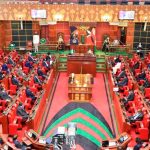Lending to the Kenyan government and buying hard currency for investment purposes provided the best returns to investors in the first half of this year, beating earnings from property and shares listed at the Nairobi Securities Exchange (NSE).
A Business Daily analysis of the different asset classes in the six months to June shows returns from government bonds auctioned this year averaged 13.64 percent, up from 12.83 percent in the corresponding period last year.
The highest return on a bond issued this year is the 15.84 percent that investors are earning on the seven-year infrastructure bond sold last month, which also has the added advantage of being tax-free.
Returns on Treasury bills have also gone up this year, cracking the 12 percent level for all three tenors in the most recent auction, from an average of 9.8 percent at the beginning of the year.
These returns have gone up due to investors factoring in high inflation, a weaker shilling and the government’s difficulties accessing credit from the external market on cost concerns.
For its part, the equities market has faced headwinds on the back of persistent foreign investor selling, even though the losses are on a lower scale compared to the first half of 2022.
The NSE shed Sh320 billion in investor wealth during the first half of the year, compared to Sh653.7 billion a year earlier, and all three indices remained in the red, led by the All Share index at negative 16 percent.
The foreign investor selling has been caused by a reallocation of capital to western bonds and equities that are viewed as safe havens in times of global uncertainty.
“There is an aspect of flight to safety which has been baked in with a higher allocation to fixed income. Getting into this year the macroeconomic environment was not that convincing, which has led to a negative outlook for the other asset classes like equities and real estate,” said Churchill Ogutu, an economist at IC Asset Managers (Mauritius).
“In that scenario, fixed income offers investors a safe haven as they monitor the situation.”
Like equities, the property market has struggled to get much traction this year, offering flat rental and sales returns.
The property market, once the best-performing asset class and magnet for high-net-worth investors like pension schemes, has slowed down in recent years, with the Covid-19 pandemic in particular hitting sale and rental prices hard.
An analysis done by realtors HassConsult shows that rental returns in Nairobi in the first quarter of the year stood at negative 0.5 percent, down from one percent in the corresponding quarter last year. Sales prices rose by 0.02 percent, compared to a gain of 2.8 percent in quarter one of 2022.
There have been positive returns though for cash holdings, for both local and hard currency.
Those holding dollar deposits in local banks have enjoyed an exchange gain of 12.2 percent, with the US currency having gained by that margin on the shilling since January.
The shilling has in the meantime weakened by 14.3 percent against the British pound and by 14.1 percent against the euro, meaning that holders of these currencies have also booked good gains.
Offshore investments have also made high returns this year—at 16 percent in quarter one—driven by higher interest rates and rising stock markets in western economies.
Allocation to these external assets, however, remains low relative to other assets such as fixed income, equities and property, meaning that the high gains have a limited impact on overall portfolios for institutional investors like pension funds.
Fixed deposits in banks were offering an average interest rate of 7.57 percent in the first four months of this year, up from 6.55 percent in the corresponding period in 2022, Central Bank of Kenya (CBK) data show.
Although the rates are below the six-month average inflation of 8.5 percent, they have been on the up due to banks competing for deposits among themselves and against the rising rates on government securities.
Small savers, however, did not make significant gains in the money market environment as their rate of return has remained at about 3.6 percent since banks have increased their reliance on wholesale deposits to support their lending.




